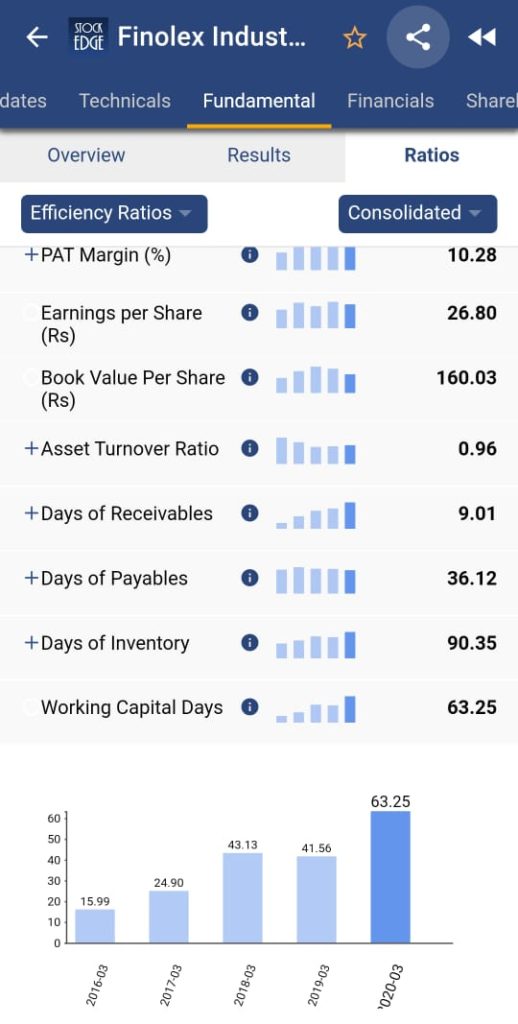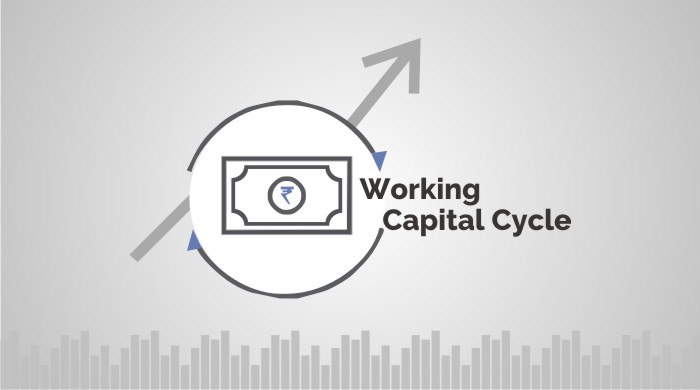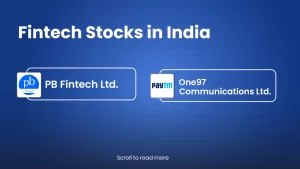Table of Contents
Working Capital cycle is an important ratio that tells us how many times in a year is a company able to churn its inventory to make goods and generate cash for their business!!!.
Now would you not like to invest in a company that does not need to take much debt as their goods get sold as soon as it gets manufactured. I bet you would!!!.
That means the company keeps on receiving back the money from sales of its goods and uses the same cash for its inventory purchase thus hardly requiring any debt financing. These companies are investors’ favorites.
WCC Impact analysis
The Working Capital Cycle for a business is the length of time it takes to convert net working capital (current assets less current liabilities) all into cash. Businesses typically try to manage this cycle by selling inventory quickly, collecting revenue from customers quickly, and paying bills slowly, to optimize cash flow. It is used to understand the liquidity and efficiency of the company. The longer the working capital cycle the lesser is the chances of the generation of quick cash and the shorter the working capital cycle the higher the turnover ratio thus generating more cash for the business. Hence, the outside debt or loan requirement becomes less which increases the efficiency quotient of the business.
You can also watch the below video on Everything you want to know about Working Capital Cycle:
What Impacts the working capital cycle
Sometimes natural calamity like Tsunami or Earthquake or unforeseen calamities like flood or government policies or geopolitical turmoil or economic implications or macros of different countries impacts WCC for a shorter span of time but the effect can be long-lived. If the management is dynamic then it will try to minimize the effect on its working capital cycle and increase cash flow generation.
Types of the Working Capital Cycle
If the Current Assets exceed Current liabilities then the firm has a positive working capital cycle and if the Current Assets are less than the Current Liabilities then the firm is expected to have a negative working capital cycle. Shorter the working capital cycle higher is the free cash flow generation and higher is the liquidity of a company. Components impacting WCC are debtors, creditors, stock, and Free Cash.
See also: Days of Inventory
Working Capital Cycle Calculation – Working Capital Formula
Working Capital = Current Assets-Current Liabilities
Working Capital Cycle = Inventory Days + Receivable Days – Payable Days
Now let’s understand in an example what exactly does WCC means. Payable days means the average days the company takes to pay its bills, amount to suppliers, etc. Receivable days refer to the average days that a customer takes before making payment to the company. Now Inventory days mean the days required to turn inventory into sales.
Now Suppose the Inventory is bought on the credit of 45 days, the company sells its manufactured goods in 40 days and the company receives payments from the creditors in 15 days.
Therefore Inventory days is 40 days, payable days is 45 days and the receivable days is 15 days
Thus WCC = 40days +15days – 45days =10 days.
Therefore the company receives back its cash within 10 days of selling its Inventory.
Below we can see the working capital cycle of Finolex Industries which is growing and thus has a negative outlook for the company:

StockEdge App
Nowadays we don’t have to calculate the Working Capital Cycle on our own. StockEdge gives us the WCC of the last five years of any company listed on the stock exchange. We can look at and compare the WCC of any company and filter out stocks accordingly.
Suppose we want to look at the Working capital cycle of Finolex Industries Ltd for the last 5 years than in the Fundamental tab of Finolex Industries Ltd, click on the fundamentals tab, we will get the Ratios tab. Then in the Ratios tab click on the Efficiency Ratios, we will get the WCC of Finolex Industries Ltd.
Frequently Asked Questions
What are the 4 main components of working capital?
The 4 main components of working capital are as follows:-
1 – Trade Receivables
Trade receivables are the amount owed to a business by its customers followed by the sale of goods or services on credit which is also known as accounts receivable, trade receivables are classified as current assets on the balance sheet.
2 – Inventory
Inventory is another significant part of current assets, which forms an integral component of working capital management. Inventory Management is essential since it is responsible for proper control over inventory right from the raw material stage to the finished goods stage.
3 – Cash and Bank Balances
Business efficiency is determined by the amount of free cash flow to the firm (FCFF) which it generates. Proper utilization of cash ensures businesses garner trade discounts and improve the cash conversion cycle, which is a critical yardstick to analyze the working capital cycle of any business.
4 – Trade Payables
Trade Payables are the amount which the business has to pay for credit purchases made by it. A good payables management policy goes a long way in ensuring timely payment and cordial business relations with vendors and creditors.
What increases working capital?
An increase in working capital indicates that the business has either increased current assets (that it has increased its receivables or other current assets) or has decreased its current liabilities—for example, has paid off some short-term creditors, or a combination of both. Positive working capital is a good sign of financial strength. However, an excessive amount of working capital for a long period might indicate that the company is not managing its assets effectively.
Bottomline
The Working Capital cycle varies from Industry to industry thus stocks under the same industry are comparable. Thus there can be no defined criteria for the working capital cycle but worry not our app gives you in-depth data of five years to analyze the working capital cycle. So wait no more, if you have not subscribed to the StockEdge app then subscribe now and avail of this data for free. We also have scans available in our premium version which is a paid feature.
Join StockEdge Club to get more such Stock Insights. Click to know more!
You can check out the desktop version of StockEdge.










great containt tnx to vivek sir